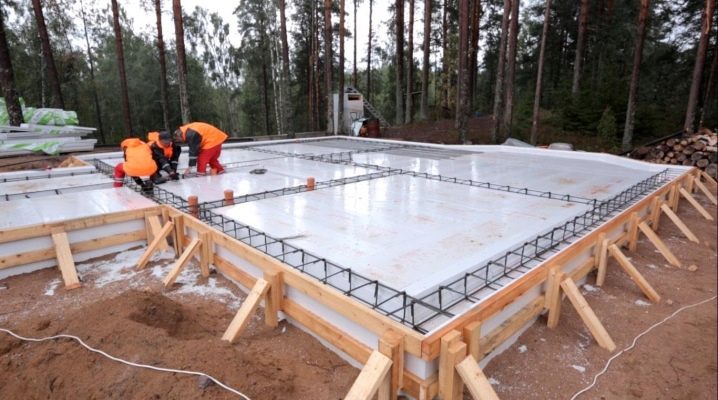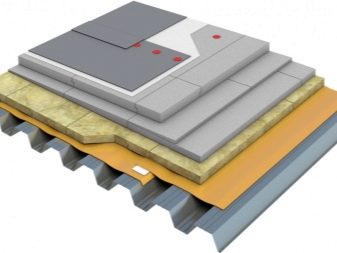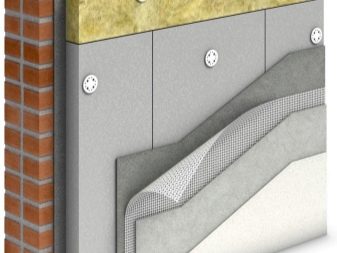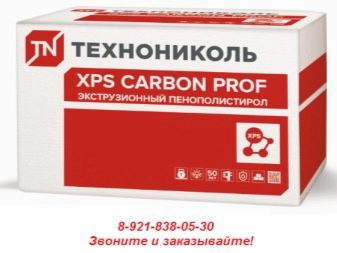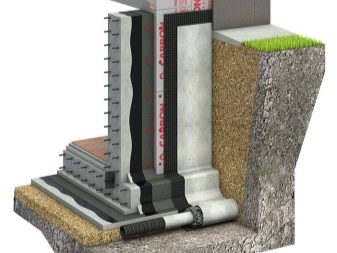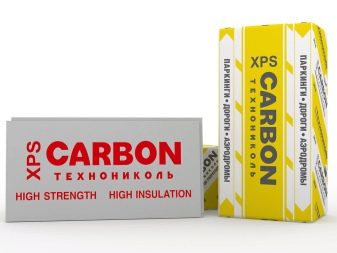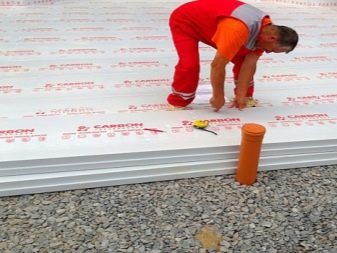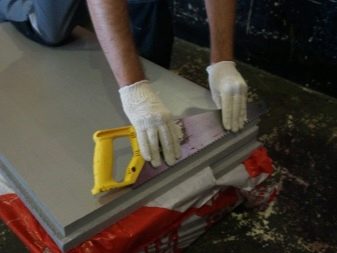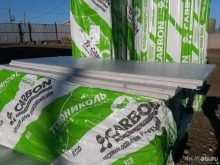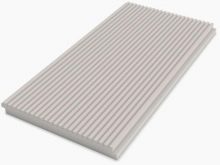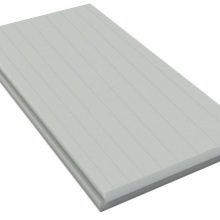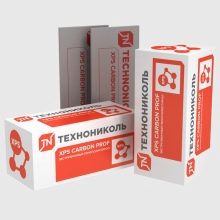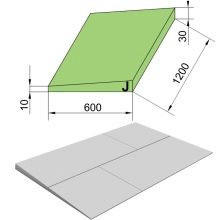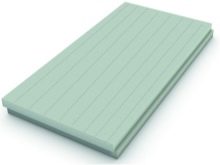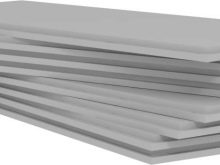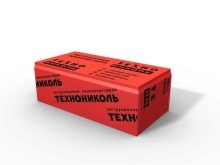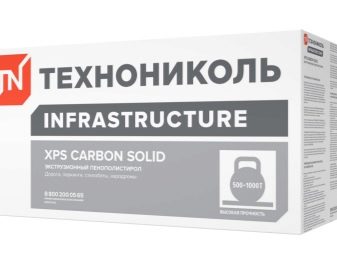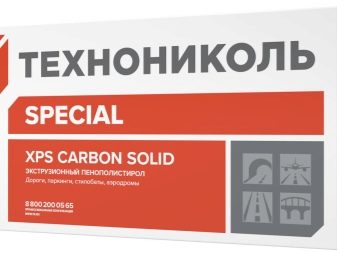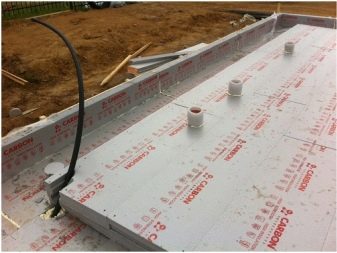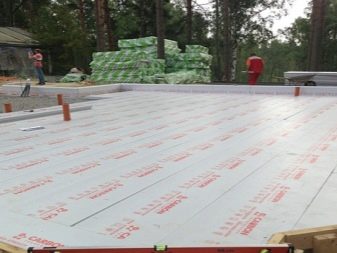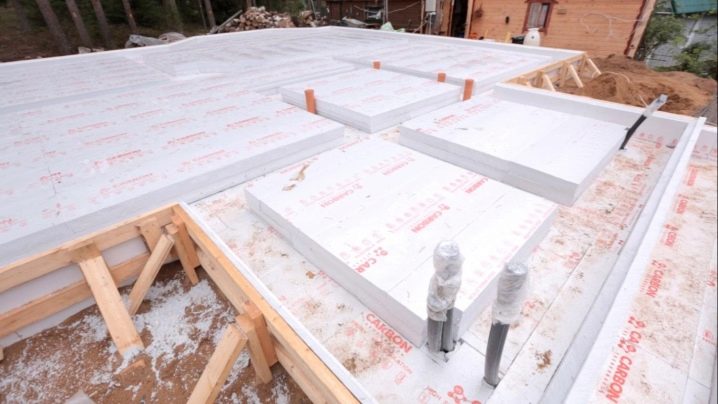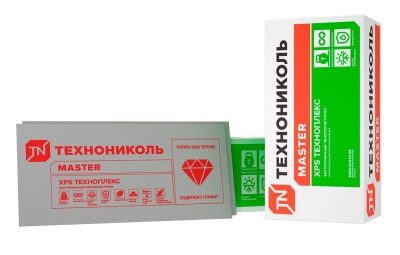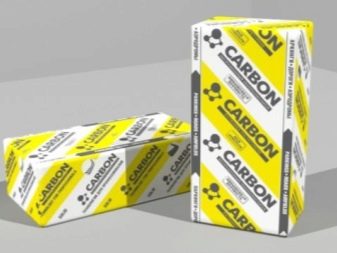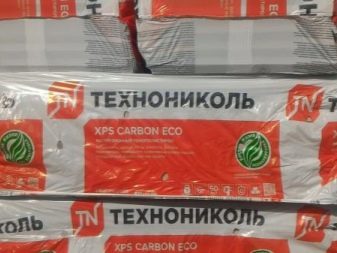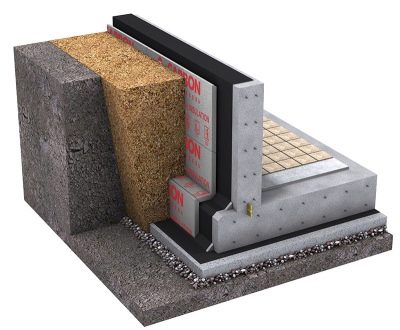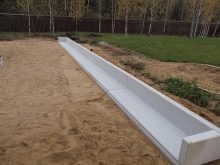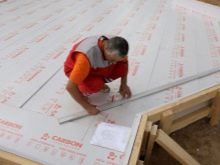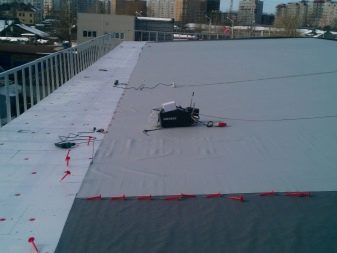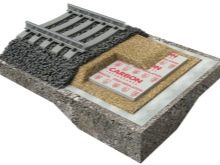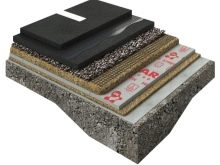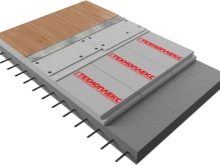TechnoNICOL Carbon: variations and use of thermal insulation material
In the choice of insulation, many prefer the products of the company TekhnoNIKOL. The brand is known for a wide range of similar products, offering to the attention of customers 5 collections of thermal insulators. The Carbon series is one of the sought-after rulers and provides for its nuances of use.
Features and production
TechnoNICOL Carbon is an extruded polystyrene foam. This insulation based on carbon with a low thermal conductivity. Carbon microparticles are used in its production. This helps to reduce the level of thermal conductivity and increase the strength of the insulation. Due to saturation with nanocarbon, the line of materials is characterized by a light silver shade.
This is one of the best in energy efficiency insulated materials of the brand. It is distinguished by the stability of the geometric shape, regardless of the life. It does not shrink, as other varieties from other rulers. The line includes materials for amateurs and professional craftsmen.
A simple man in the street this allows you to cope with the installation of the material on their own, which significantly saves the budget. One of the features is the presence in the line of deviating insulation. These are slabs of different thickness, which look like a hill with a slight slant. The wedge-shaped material is used during the roofing works in order to eliminate the formation of voids.
Materials differ in different density, shape and purpose. They are characterized by a uniform distribution of closed cells. XPS plates are designed with regard to GOST, are certified products. They have technical specifications and technical specifications with descriptions for each type of technical specifications. For each of them, the brand carries out an inspection, entering accurate data in the marking.
GOST is subject to even the method of transportation. The company has developed the main recommendations, according to which,material can be transported up to 500 km in an open car. In this case, the material must be protected from direct sunlight and precipitation. Varieties for specific needs are produced in accordance with the regulatory documentation of other manufacturers.
Packed insulation in shrink film. You can store insulation in a vertical or horizontal position using pallets, sticks or other supports. Storage is also possible outside.
In this case, the material needs a canopy or protection from UV rays, as well as precipitation.
Types and application
The line "TehnoNIKOL" Carbon today includes 11 types of insulation. Depending on the type, they are designed for basement insulation, wall and ceiling ceilings, roofing.
- Eco - high strength material with a rigid base. This insulation is used for insulation of cottages and low-rise buildings. He copes with the insulation of the facade, foundation, floor and roof.
- Eco drain - analogue for covering wall drainage. Different drainage channels or ribbing. The application is microventilation and insulation of flat roofs, ridding them of stagnant water.
- Eso fas - plates with characteristic milling. Their purpose is thermal insulation of plaster facades, as well as plinths. It is appropriate to use this insulation where the adhesion requirements of the tiles to the base are particularly high.
- Eso sp - the original version of a heater base on the principle of the warmed Swedish plate. This is a very durable material that is resistant to weight loads. It is used in frame structures that do not require a basement.
- Prof - professional XPS material in the form of rectangular plates, used for almost all types of insulation up to the foundation. This is the material with the lowest thermal conductivity.
- Prof Slope - a separate version of the plates with a slope for roofing. Sold in the form of a set of sheets with different slopes. Apply where necessary device slope and razuklonki in the valley to the drain funnels.
- Sand mon - plates of the same thickness for the core of insulating sandwich panels. It is heat insulation for monolithic housing construction.
- Sand PVC - analogues of the previous insulation. They are developed on the basis of extruded polystyrene foam for further use in PVC sandwich panels.
- Sand VAN - another core version for sandwich panels. In contrast to the two previous varieties, its purpose is to insulate insulated cars. It is used to insulate the bodies of trucks.
- Solid type A - option with the closed cells and a rigid substrate. Plates are used in civil engineering. In addition to insulation of the foundation, they are used for plating of used and loaded roofs, as well as for insulation of the bases of heavy-duty machines.
- Solid type B - analogue with high technical and operational characteristics, similar structure. The purpose of the material is to insulate the reinforcement of the main area of the subgrade without removing the rail-sleeper grid. This is the best raw material for laying thermal insulation of railway tracks.
Different applications explain the importance of careful choice of insulation. In fact, it cannot be called universal, designed for all cases of construction. Taking into account this aspect will allow you to buy the desired option insulation. The company provides detailed information, indicating the list of properties of each material.In addition, each type of product is marked with an image for greater clarity.
It shows packaging, sheets, their homogeneity, ribbing or wedging.
Specifications
Physico-mechanical characteristics - a list of the properties of each type of polystyrene insulation. Depending on the density and thickness of the indicators may vary.
The main characteristics include:
- compressive strength by linear deformation (150-200, 450 kPa);
- flexural strength at different thicknesses (200, 450–700 kPa);
- thermal conductivity at t +25 + 30 degrees (0.031–0.033 W / m K);
- thermal conductivity in conditions of different operation (0.034 W / m K);
- water absorption (no more than 2%);
- initial density (36–80 kg / m3);
- flammability class (G3, G4);
- flammability (B2);
- smoke formation and toxicity (D3, T2);
- operating conditions (-70 to +75 degrees C).
The parameters of the plates are different. Standard dimensions of extruded polystyrene foam are (L x H x V) 1180x580x50 mm. In the line you can find plates in length (L) 4000–4500 mm, width (H) 580–600 mm and thickness (V) 40-100 mm. For example, such parameters are on Solid plates. The analogue of Carbon Eso in thickness is 1-10 cm. The length can be in the range of 1180–1200 mm. Option "Carbon Eco 35-300" can be used for thermal insulation of the facade of a brick house.
The compressive strength of thermal insulation is different. In some cases, it is 300, 400 kPa.Varieties of the professional type are more durable and less thermal conductivity. Their vapor permeability coefficient is 0,014 mg / m h Pa.
Due to this, it is possible to reduce the thickness of the warming material.
Advantages and disadvantages
At the extrusion insulation "TechnoNIKOL" a lot of advantages. It is used for indoor and outdoor insulation of buildings. It is necessary to identify the main advantages.
- They universal. They can be used for warming vertical, horizontal and inclined planes.
- Heaters variable. The buyer has the opportunity to choose between products of different price segments.
- Different orientation insulation. The choice allows to carry out high-quality thermal insulation of different planes.
- Durability. Extrusion insulation domestic brand does not need to be adjusted for several decades.
- They don't crumble and do not crumble over time, do not swell when in contact with water, they are wear resistant.
- These materials inert to chemicals. They do not rot and do not decompose.
- Their thermal conductivity improved in comparison with other analogs of other collections.
- These materials Biologically resistant. The structure does not attract the attention of rodents and insects.
- Thermal insulation of the company is anti-static. This eliminates the risk of the emergence and development of microorganisms and mold fungi.
- Extrusion insulation eco-friendly and are not afraid of moisture. It is not absorbed into the structure of the material.
The manufacturer manufactures products that are easy to install. Wherein sheathing can be done in different ways. However, the methods combines the speed of work. Each product is marked by quality control. The brand tries to make products without prohibited blowing agents and flammable components. Other types are insured in the Alliance Insurance Company for one million euros.
In addition to the advantages, it is worth noting the disadvantages of these materials. According to research, extruded polystyrene foam of the “Carbon” series does not support fire, but it can melt already at t 60 degrees. In this regard, it loses its structure, starting to collapse. It is not always good to warm the walls with this material, which is associated with vapor permeability. It is more suitable for foundations due to closed pores. It can also be used for ground and plinth.
Customer opinions indicate that the density of the considered line is small. Sometimes buyers point out that budget options are heterogeneous in structure. This leads to a reduction in their service life. The difference between the quality of elite and cheap materials is also obvious.
To make the insulation reliable and durable, you have to buy expensive raw materials.
Technology and installation steps
Install extruded polystyrene alone will not be difficult. If you perform facade insulation, all the main types of work inside should already be done. This applies, including window, door openings, as well as the roof of the building.
Installation consists of several consecutive steps.
- Buy the required amount of glue and insulation, taking into account the calculation of the number of packages.
- Prepare the necessary inventory, simplifying workflow.
- Insulation must be fixed on a flat base. To do this, level the surface, remove the obvious bumps.
- To glue better kept thermal insulation, you need to remove dust with a damp cloth. Then the surface should dry.
- From dirt and grease to get rid of. They will reduce adhesion.
- After that, a layer of primer is applied to the surface.It is better to use the soil with the highest penetrating power. It aligns the structure of the base, binds the dust and microcracks.
- Large cracks are covered with cement-based plaster. Then these places are ground again. The soil layer must dry before fixing the insulation.
- Perform the markup and attach the profile to the base. Its width should be equal to the thickness of the insulation used.
- On the back side of the insulation is applied glue dot method. Can be applied in stripes.
- The plate is applied to the base and tightly pressed. So carry out a covering of the necessary area. In this case, we must not forget to mount the plates together.
- After fixing carry out laying of a waterproofing. Usually it is used as a thin film, which is worn on the frame within 2-3 cm from the insulation.
- It remains to perform the finishing on top of the insulation.
Tips for choosing
So that the quality of insulation by the extruded thermal insulator "TechnoNIKOL" meets the necessary requirements, worth taking note of a few recommendations.
- It is necessary to pay attention to the labeling. It indicates the purpose of each material.
- Purchase must be carried out in a trusted store with positive customer reviews.
- You can pre-scroll through the comments of professional masters in the field of construction. In addition to the merits, they usually indicate the disadvantages of a particular material.
Material is chosen taking into account the special calculation. This will buy the right amount. The formula is quite simple: the height of the walls is multiplied by the perimeter of the walls, then multiplied by the thickness, and then by the mark indicated by the manufacturer on the marking of cubic meters. With a wall height of 3 m, a perimeter of 24 m, a thickness of insulation 5 cm (0.05 m) and a volume of 0.36 m3 on a package, it turns out:
- 3 x 24 = 72 (m2);
- 72 x 0.05 = 3.6 (m3);
- 3.6 / 0.36 = 10 (packs).
Knowing the formula will save on the right amount: often a team of masters purposely overstates this figure in order to use it for other needs.
You will learn more about the products of TechnoNICOL Carbon from the following video.
